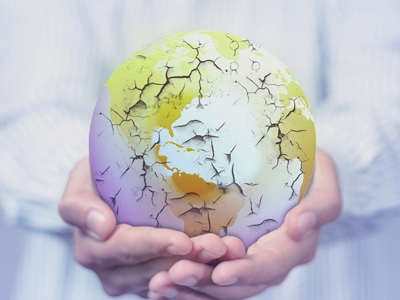
Reducing the Damage Caused by Earthquakes
The GCSE syllabus requires that you study the causes, effects, immediate and long-term responses and the need to predict, protect and prepare for earthquakes. You need to be able to compare and contrast the ways in which wealthy and poor countries can minimise the social, economic and environmental damage caused by earthquakes.
Earthquakes happen as the Earth's tectonic plates move around. They can move apart, slide past each other or towards each other. The plates are constantly moving but the movements at plate boundaries are definitely not smooth. Where plates meet, the rocks on either side of the boundary stick because of friction. As the rest of the plate moves, the forces build up to the point where the 'stuck' rocks break, releasing huge amounts of energy.
This sudden release of energy is felt throughout the world as an earthquake. The further you are from the point at which an earthquake occurs, the weaker the effects.
Managing and reducing the damage caused by earthquakes is expensive. There are short and long term social, economic and environmental impacts to deal with. The effects of earthquakes can be categorised as being primary or secondary. Primary effects are those that occur due to the shaking of the ground e.g. buildings collapsing and underground pipes and cables snapping. Secondary effects are as a result of the primary effects e.g. tsunamis, fires, lack of clean drinking water and sanitation.
In MEDCs, there is sufficient money to spend on the people and technology required for earthquake monitoring and for building earthquake resistant buildings. In LEDCs, construction standards are often poor, so buildings suffer greater damage and can collapse completely. Communications in MEDCs are generally well developed so rescue teams can be in place very soon after the earthquake. They have the resources to help people and manage the secondary effects. LEDCs often rely on international aid for disaster relief which takes longer to put in place. Cleaning up and rebuilding afterwards is more difficult in LEDCs due to limited funds and resources.
Ready for more?
not all...
quizzers. Try to win a coveted spot on our Hall of Fame Page.







